Roof Repair Services in Oregon City OR
Repairs and Maintenance
Roofs in the northwest are under assault. Many factors will damage or limit a roof’s life. Extreme weather, constant moisture, tree debris, moss, salt in coastal areas, poor workmanship, wrong products for the situation, lack of maintenance, building use changes, ventilation problems, questionable substrates and improper remodeling practices all add potential problems we must inspect for and consider.
When it comes to roof problems and failures, the vast majority of sudden issues we see come from two sources: improper workmanship or a lack of maintenance.
Improper workmanship operates like a time bomb. The many factors of age, weather, product wear, tree debris, moss, roof design, roof slope and ventilation all play into a roof’s ability to perform. However, improper workmanship always creates leaks, it is just a matter of when. Roof performance relies on Lack of maintenance offers its own issues. Moss and tree debris form dams that hold water back in the roof assembly. Often, the fittings and sensitive areas on a roof get damaged from neglect. These issues lead to leakage and damage inside the home.
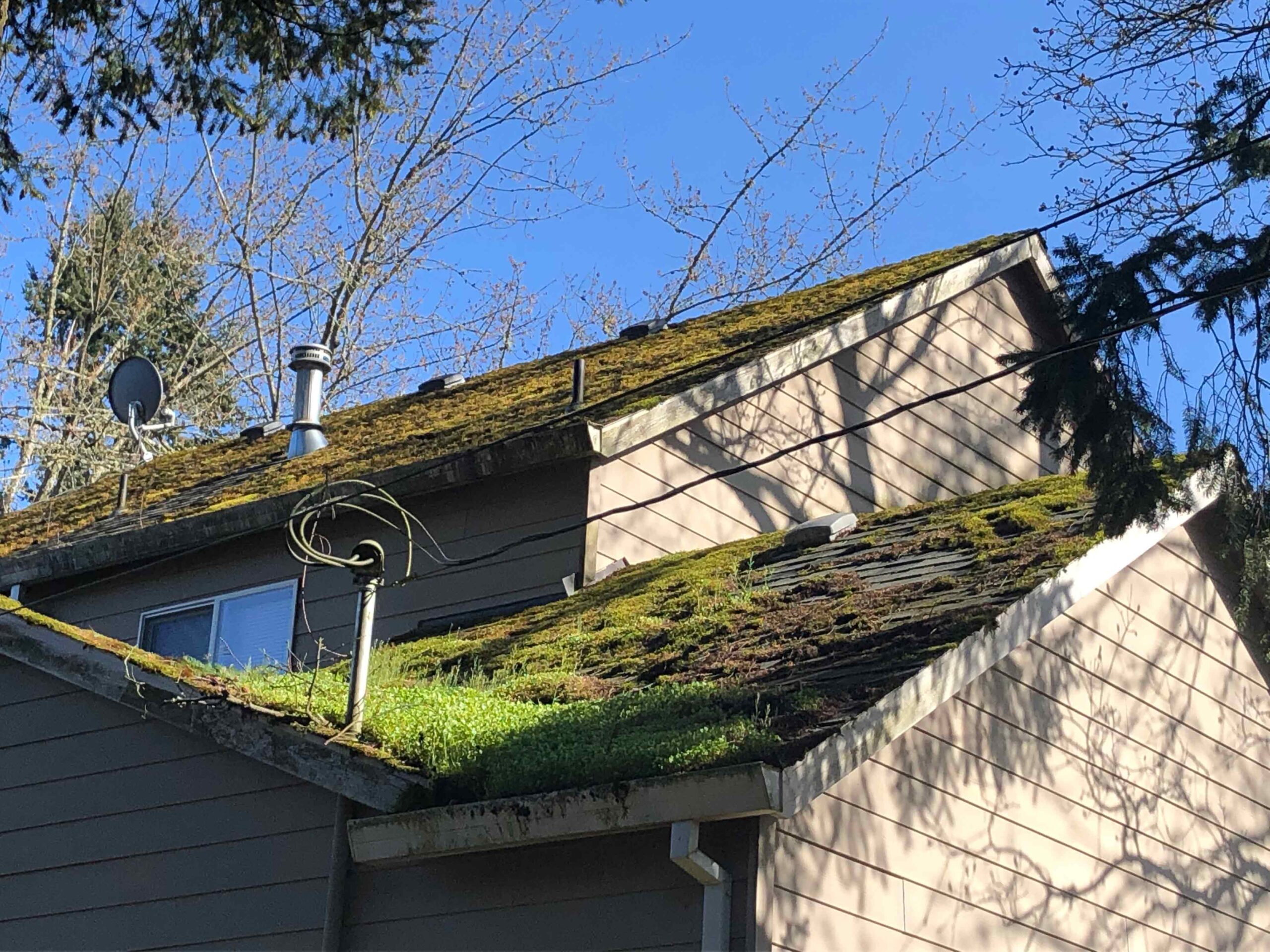
Maintaining Asphalt Composition Roofs
In fact, the greatest problem we see with moss and tree debris is the damming effect it has. The average roof shingle is 1 meter wide, leaving a joint between shingles every meter where the shingles are butted-up next to each other. When moss and/or tree debris line the bottom edge of the shingles and the vertical joint, we see water that would freely shed off the roof becomes dammed under the shingle. It then stays inside the roof assembly and tends to travel horizontally. What many clients do not understand is that your nails are often only ½” under the lip of the shingle, and only 4 or 5” from the joint between shingles. In other words, tree debris and moss re-route water in the roof, right to the nail holes in the shingles. That makes tree debris and moss the enemy of the roof.
Any abrasion on an asphalt roof lessens its life expectancy. In other words, cleaning can damage a roof. In fact, any cleaning likely damages a roof, but aggressive removal of moss and/or tree debris can radically harm the roof. So preventative maintenance is the best and most effective means of protecting your home and extending the life of your roof. There are conservative methods and approaches designed to protect and manage your roof as an asset.
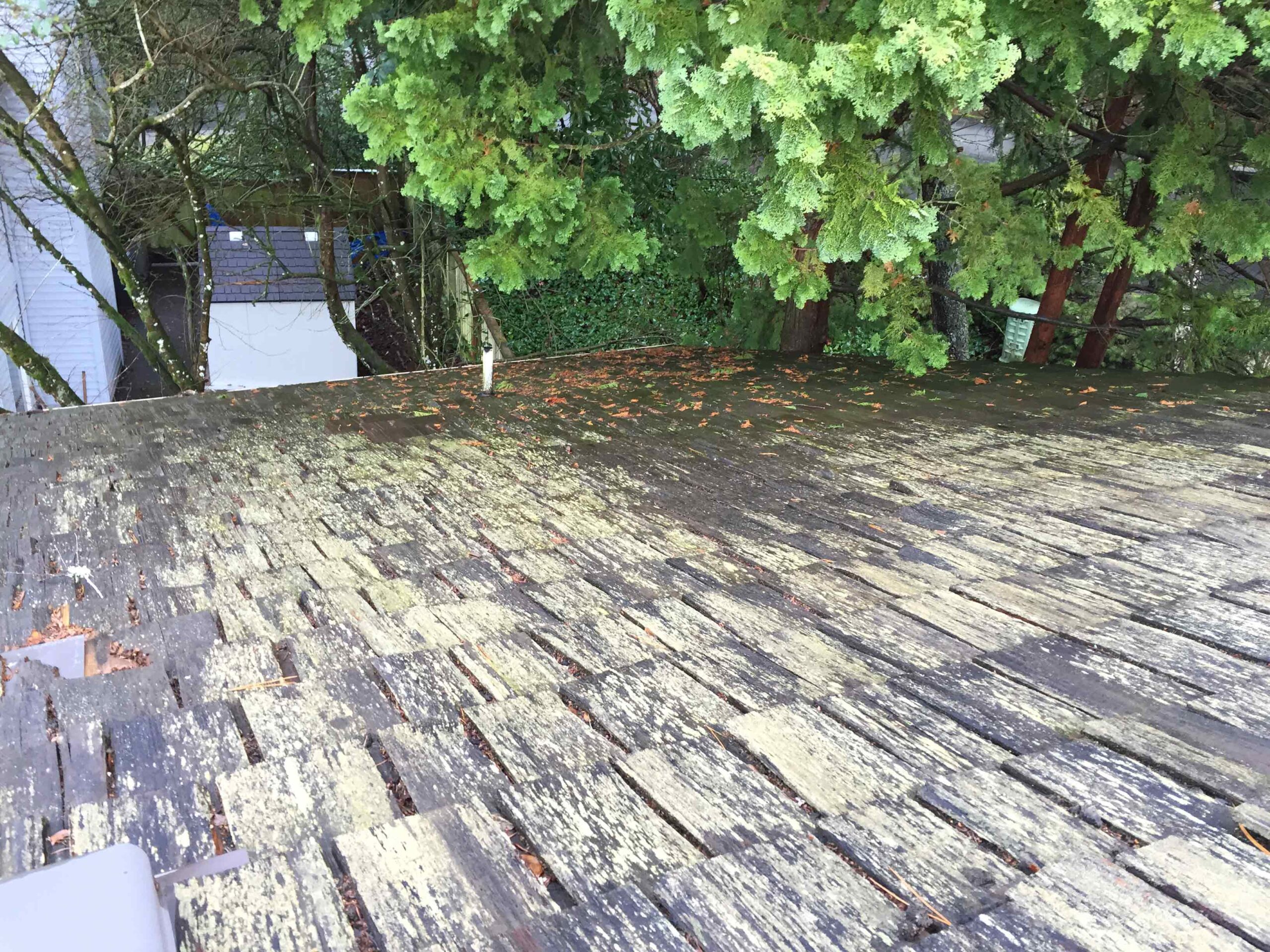
Maintaining Cedar Roofs
Many cedar repair and maintenance companies do not take the painstaking approach of managing cedar roofs the way they require. Power washing can thin the cedar shakes and shingles. The average shake is ½” at the bottom. But 20” high, at the top, the small part that is exposed to the sun may only be ¼” thick. That area wears though from sun and weather exposure. But if abrasive cleaning techniques are added, the life of the cedar may reduced very quickly. It is critical to hire professionals who understand the unique characteristics of this roof material.
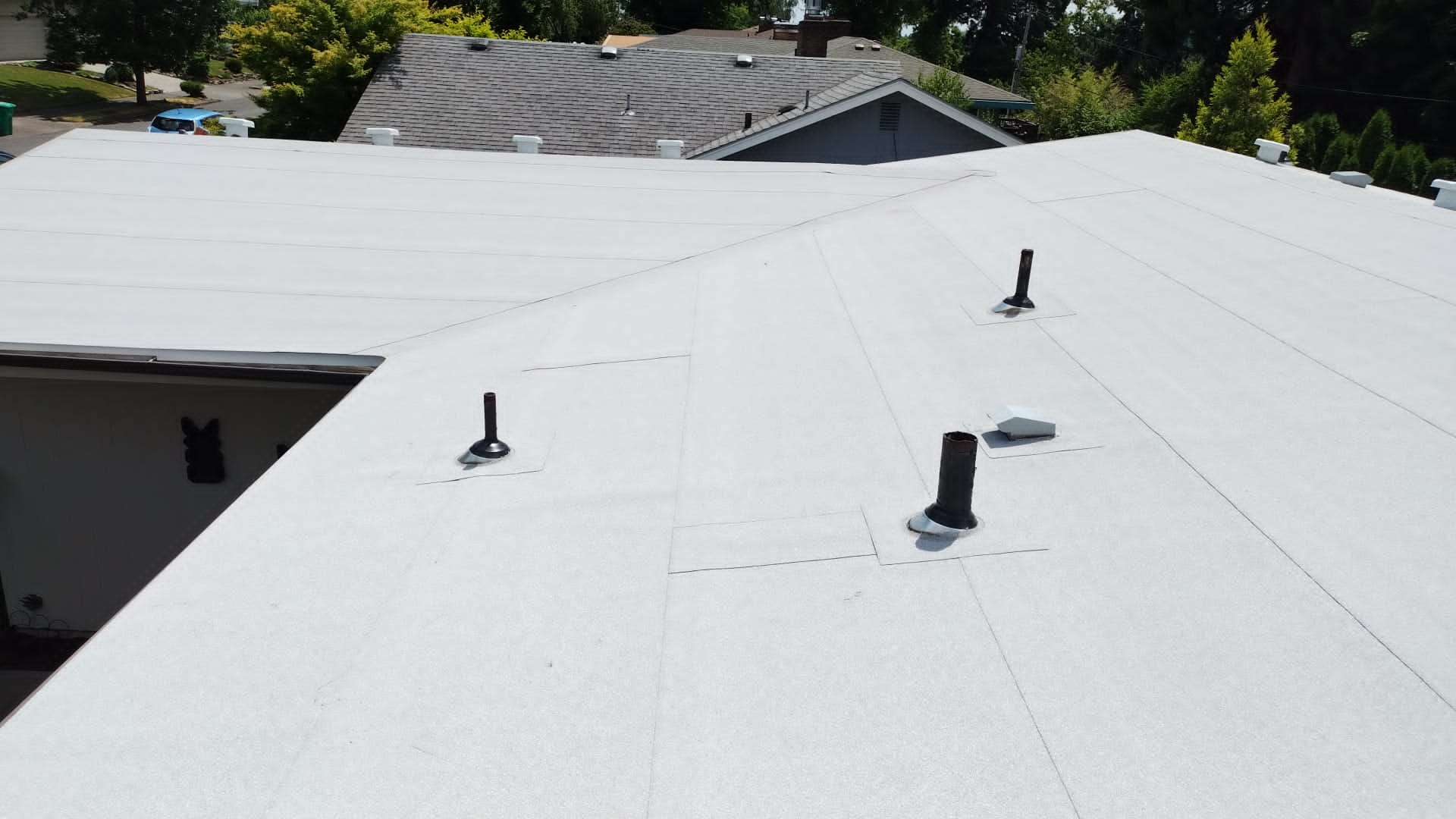
Maintaining Flat Roofs
Due to their high expense and high likelihood of problems, we recommend a close inspection for all of these factors at regular intervals. Manufacturers often require these inspections for their roof system warranty. Staying abreast of conditions on your flat roof through inspection and performing necessary repairs may save substantial headache and wallet-ache.
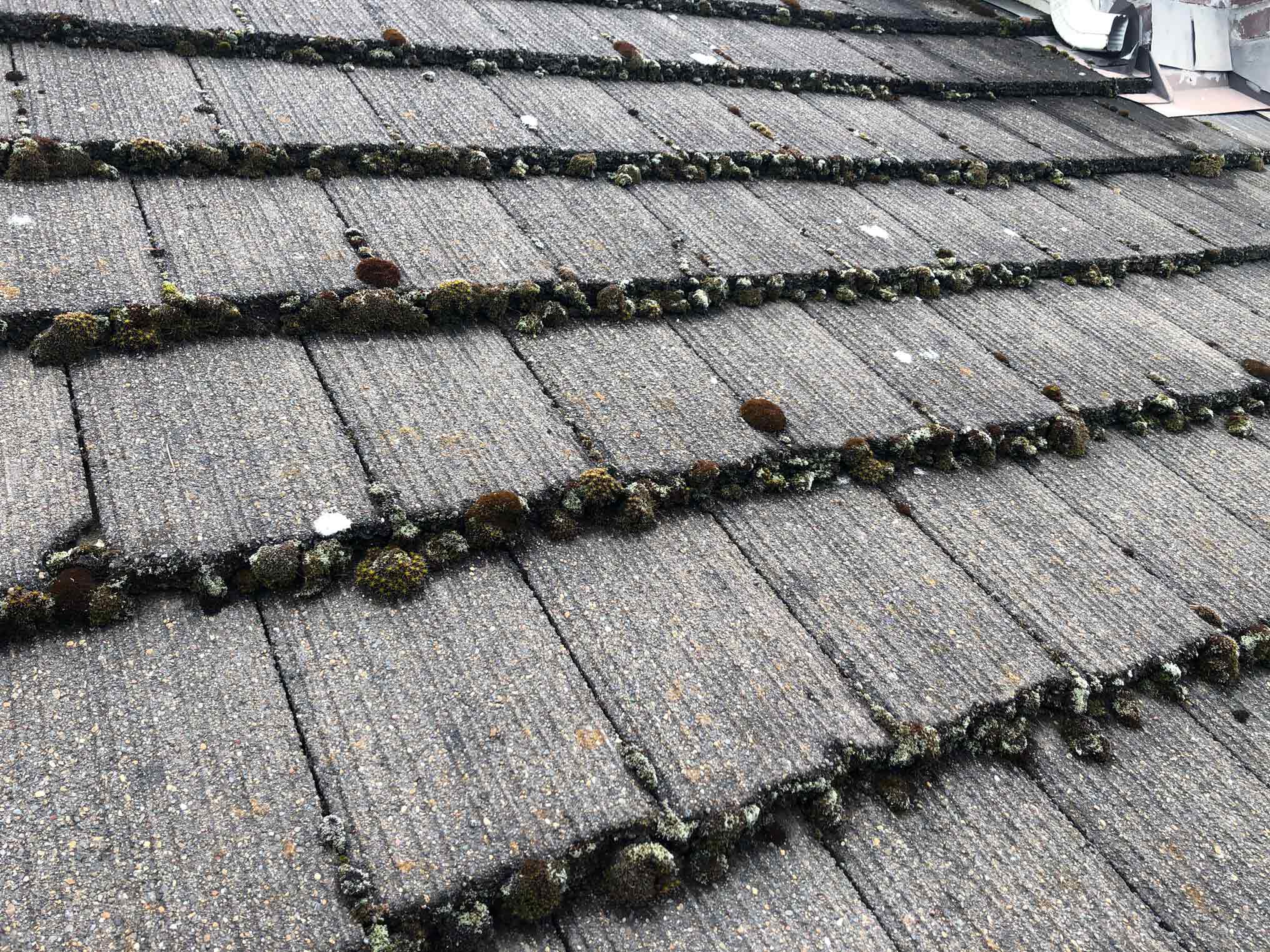
Maintaining Tile Roofs
Generally speaking, most tile roofs were not designed for the Northwest climate. They are a single coverage product, meaning that they are only one layer thick on about 60% of the roof surface, while asphalt composition and cedar roofing is two-layers thick (or greater). When tile seams and joints become lined with blockage from tree debris and moss, water is naturally re-routed underneath the roofing. Most tile roofs have a paper-based felt paper that is the only thing keeping the house dry. This felt paper cannot handle long-term saturation with water. The result? Plywood damage and slow, leeching leakage that damages the roof structure.
Because of this reality, maintaining tile roofs carefully and consistently is key. These products have specialty coatings on them to protect them from soaking up water and from freezing, thawing and breaking. Often times, we see these coatings removed by aggressive cleaning, which also compromises the roof. Continued and diligent maintenance efforts are key to ensuring the maximum life expectancy of your tile roof.
Another unique handicap with tile roofing is the batten system. Battens are wood strips that the tiles hang on. Tile roof valleys often have battens that dam debris in the roof assembly. These, too, need attention and cleaning.
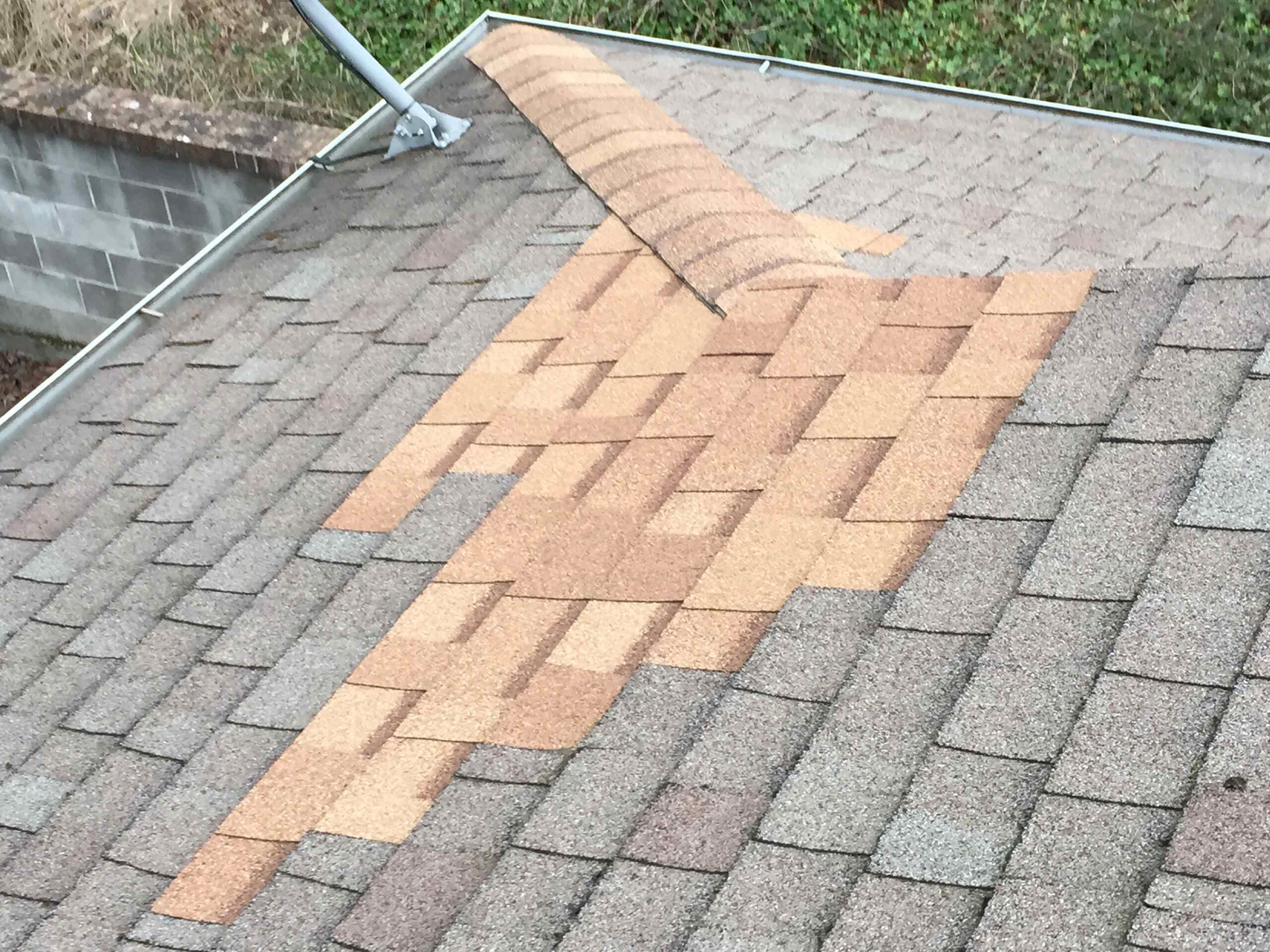
Repairs
There are generally two types of repair. “Temporary repairs” are repairs that do not involve complete correction of the problem. Unfortunately, most repairs in the roofing industry fall under this category. Roofers often think of repairs as a “patch.” This is a temporary perspective that does not consider a long-term objective. It is a “stop the problem now, worry about the long-term results later.”
“Permanent repairs” are when the entire problem is corrected so that the issue will get the maximal life of the roof covering. This is a quality approach. Permanent repairs require more expertise, time and effort, and often times involve a more complete approach to preparation and detail work.
Both repair approaches have their place. We recommend communication with your estimator to determine which approach they are proposing and which approach may be the best fit for you.
